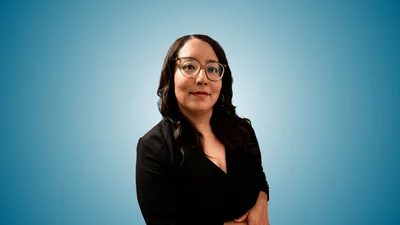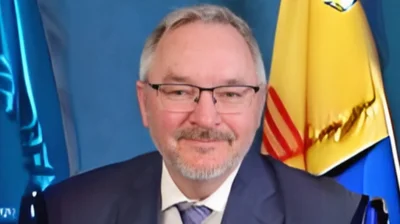As members of Women Taking Back Our Neighborhoods and the Albuquerque community, we are voicing our strong opposition to the Amendments to the city’s zoning ordinances which sanction homeless encampments across our city. These proposed amendments will be voted on at the June 6, 2022, City Council meeting and if approved will alter the lifestyles and property values of Albuquerque residents for decades to come.
Councilors supporting sanctioned encampments are exhibiting zero accountability to put forth what our review has shown to be a disaster in the making.
Our review of four western cities (Denver, Honolulu, Salt Lake City and Seattle) that have implemented sanctioned encampments, with huge levels of support and services that Albuquerque cannot begin to match, has shown that irreparable damage has been sustained by these cities: not just to residents and neighborhoods where sanctioned encampments are placed, but to innocent encampment residents who have been raped, murdered, beaten, robbed and experienced what can only be described as “inhumane treatment” (while being promised safety as residents by city employees as Outreach Workers).
Having recognized the ongoing public health and public safety deterioration from the encroachment of encampments, three of these cities (Honolulu, Salt Lake City and Seattle) have abandoned their support of the sanctioned encampment model and have begun implementing ordinances to remove all encampments to move toward a transitional housing and/or campus model - programs that have been found to bring physical and fiscal safety to communities while reducing crime.
Denver recently implemented a ‘sanctioned encampment’ model to the dismay of traumatized residents, who have already begun a formal appeal process to remove them. Additionally, some 65 cities across the United States have implemented ordinances to remove all encampments.
Thus, we request that the proposal to sanction dangerous and crime inducing encampments within the City of Albuquerque be withdrawn. If this proposal for zoning changes comes to a vote, we are asking ALL City Councilors to vote ‘NO.’
There is a better way to serve Albuquerque’s homeless that better utilizes existing resources! “The Campus Model.”
Albuquerque City’s purchase of the Gibson Medical Center (GMC) with its Gateway Hub has been a significant first step toward the City’s commitment to comply with the 2018 federal court decision known as Martin v. City of Boise, Idaho that said, ‘cities cannot make it illegal for people to sleep or rest outside without providing sufficient indoor alternatives.’ Albuquerque City is moving toward finding beds for those homeless individuals who are currently residing in unsanctioned encampments. While Gateway Hub at GMC will be a step in the right direction, it will not be large enough to serve the needs of the homeless population in unsanctioned encampments. The Campus Model provides an additional step as an adjunct to the Gateway Hub at Gibson Medical Center for transitioning to permanent housing. This establishes it as a Viable Alternative to Encampments.
The Campus Model recognizes that there are two categories of homeless individuals: the transit homeless and the local or ‘real’ homeless. The Campus Model is geared to serve the local homeless population. The Campus Model works effectively because it separates the truly local homeless population from the non-local transient population. The truly homeless are a local population that benefits from services and wishes to better themselves. The transient homeless is a population that travels from city to city, takes advantage of handouts, and has no desire to better themselves. This population consists of those who panhandle and/or commit crimes to feed their drug and/or alcohol addiction. They indeed welcome a handout, but they have no desire to better themselves. Thus, they can destroy a local community.
FIRST STEP: GATEWAY HUB AT GIBSON MEDICAL CENTER. The Gibson Medical Center (GMC) is to be an anchor facility to fill healthcare and social service gaps to Albuquerque’s homeless population. The mission of the Gateway Center will be to “provide a safe and welcoming place that provides a low-barrier, trauma informed shelter along with services to the homeless using a client-centered approach.”
II. SECOND STEP: CAMPUS MODEL. This is a viable research based alternative that has worked in other cities and can serve as an adjunct to the city’s long-range plan to provide services to the homeless by offering a community centered approach to transition individuals who represent the local homeless population to permanent homes.
The CAMPUS MODEL should be located outside the city where larger tracts of land at cheaper prices can be purchased.
KEY COMPONENTS:
- Temporary housing can be expanded to include dormitory style units with community kitchens and bathrooms for singles. Small apartments with separate bedrooms, kitchens and bathrooms with accommodations for families or individuals with service animals can be built in a later stage as well.
- Meals: Provided cafeteria style with volunteers assisting.
- Medical care will be needed for physical and mental health care, substance abuse treatment and police drop-off. Cost-effective ways to handle some of this can include nurses or physicians assistants staffed seven days, 24-hours. Coordination with Gateway Hub (GMC) can be made for more intensive medical care.
- Education and job training: Non-profit, education and other providers would be able to work together to deliver comprehensive care services.
- Community center: Includes a central meeting place for activities such as self care and community gardening.
Several cities like San Antonio, Las Vegas, and Houston have directly benefited from the Campus Model.
- Cleans up our parks and recreational sites built for family recreational purposes. o Supports businesses within the local economy (where they currently incur the adverse economic impact from homeless and transients).
- Provides public safety with policies against public intoxication, drugs or alcohol, and where all residents are held accountable. The Campus Model effectively separates the truly local homeless population from non-local transients.
Instead of following a path that will lead to certain harm to residents and neighborhoods, we offer a working alternative with the Campus Model. Recommendations and working solutions to homelessness are multi-layered. We recognize that there is a population that has barriers to obtaining services and housing. However, the priority of government leaders in Albuquerque – as it is in any city – is the physical and fiscal safety of the residents, including those locals who are homeless.
We want to trust that it is a given that our safety is paramount to our elected officials. We cannot nor should we have to examine our leaders in the way they make decisions. But with the proposal to amend zoning to accommodate encampments within our neighborhoods and the lineup of votes supporting the proposal, what are we to think about these elected officials’ view of our safety?
The City Council has approved some $950,000 in the May 16, 2022 budget for the not yet approved Amendments for encampments and safe places. This money can be transferred to the Campus Model program to begin construction. We say ‘STOP’ now and put on the brakes to an idea that has been proven to not work. Encampments are a danger to our community and are unwanted! The sane response to amendments sanctioning encampments that would surely compromise the safety of all Albuquerque citizens is to vote ‘NO.
Judy Young is a longtime resident of Albuquerque and was born in Gallup, New Mexico. Judy has been actively engaged in the community with East Gateway Coalition, Singing Arrow Neighborhood Association, Women Taking Back Our Neighborhoods, Homeless Task Force, Sheriff’s Citizens Academy, Foothills Community Policing Council. She has initiated recommendations that, when followed, significantly reversed the rise in crime. Judy Young is a candidate for Bernalillo County Commission, District 5.
Valere McFarland, Ph.D., is a former resident of Echo Ridge neighborhood. She is a very active member of Women Taking Back Our Neighborhoods (WTBON), a group founded in 2018 in Southeast Albuquerque to inform the public and demand greater accountability from elected and other civic leaders for preventing crime on Central Ave., in neighborhoods, and in public parks.








